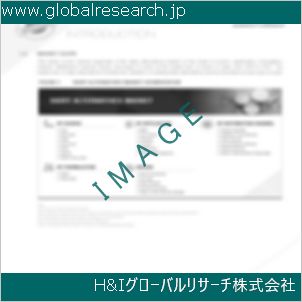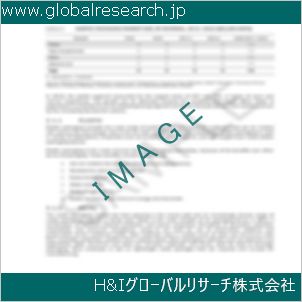1 Water-cooled Heat Exchangers Market Overview
1.1 Product Definition
1.2 Water-cooled Heat Exchangers Segment by Type
1.2.1 Global Water-cooled Heat Exchangers Market Value Growth Rate Analysis by Type 2022 VS 2029
1.2.2 Shell and Tube Type
1.2.3 Plate Type
1.2.4 Others
1.3 Water-cooled Heat Exchangers Segment by Application
1.3.1 Global Water-cooled Heat Exchangers Market Value Growth Rate Analysis by Application: 2022 VS 2029
1.3.2 Power Generation
1.3.3 Chemical and Petrochemical
1.3.4 Food and Beverage
1.3.5 Wastewater Treatment
1.3.6 Others
1.4 Global Market Growth Prospects
1.4.1 Global Water-cooled Heat Exchangers Production Value Estimates and Forecasts (2018-2029)
1.4.2 Global Water-cooled Heat Exchangers Production Capacity Estimates and Forecasts (2018-2029)
1.4.3 Global Water-cooled Heat Exchangers Production Estimates and Forecasts (2018-2029)
1.4.4 Global Water-cooled Heat Exchangers Market Average Price Estimates and Forecasts (2018-2029)
1.5 Assumptions and Limitations
2 Market Competition by Manufacturers
2.1 Global Water-cooled Heat Exchangers Production Market Share by Manufacturers (2018-2023)
2.2 Global Water-cooled Heat Exchangers Production Value Market Share by Manufacturers (2018-2023)
2.3 Global Key Players of Water-cooled Heat Exchangers, Industry Ranking, 2021 VS 2022 VS 2023
2.4 Global Water-cooled Heat Exchangers Market Share by Company Type (Tier 1, Tier 2 and Tier 3)
2.5 Global Water-cooled Heat Exchangers Average Price by Manufacturers (2018-2023)
2.6 Global Key Manufacturers of Water-cooled Heat Exchangers, Manufacturing Base Distribution and Headquarters
2.7 Global Key Manufacturers of Water-cooled Heat Exchangers, Product Offered and Application
2.8 Global Key Manufacturers of Water-cooled Heat Exchangers, Date of Enter into This Industry
2.9 Water-cooled Heat Exchangers Market Competitive Situation and Trends
2.9.1 Water-cooled Heat Exchangers Market Concentration Rate
2.9.2 Global 5 and 10 Largest Water-cooled Heat Exchangers Players Market Share by Revenue
2.10 Mergers & Acquisitions, Expansion
3 Water-cooled Heat Exchangers Production by Region
3.1 Global Water-cooled Heat Exchangers Production Value Estimates and Forecasts by Region: 2018 VS 2022 VS 2029
3.2 Global Water-cooled Heat Exchangers Production Value by Region (2018-2029)
3.2.1 Global Water-cooled Heat Exchangers Production Value Market Share by Region (2018-2023)
3.2.2 Global Forecasted Production Value of Water-cooled Heat Exchangers by Region (2024-2029)
3.3 Global Water-cooled Heat Exchangers Production Estimates and Forecasts by Region: 2018 VS 2022 VS 2029
3.4 Global Water-cooled Heat Exchangers Production by Region (2018-2029)
3.4.1 Global Water-cooled Heat Exchangers Production Market Share by Region (2018-2023)
3.4.2 Global Forecasted Production of Water-cooled Heat Exchangers by Region (2024-2029)
3.5 Global Water-cooled Heat Exchangers Market Price Analysis by Region (2018-2023)
3.6 Global Water-cooled Heat Exchangers Production and Value, Year-over-Year Growth
3.6.1 North America Water-cooled Heat Exchangers Production Value Estimates and Forecasts (2018-2029)
3.6.2 Europe Water-cooled Heat Exchangers Production Value Estimates and Forecasts (2018-2029)
3.6.3 China Water-cooled Heat Exchangers Production Value Estimates and Forecasts (2018-2029)
3.6.4 Japan Water-cooled Heat Exchangers Production Value Estimates and Forecasts (2018-2029)
4 Water-cooled Heat Exchangers Consumption by Region
4.1 Global Water-cooled Heat Exchangers Consumption Estimates and Forecasts by Region: 2018 VS 2022 VS 2029
4.2 Global Water-cooled Heat Exchangers Consumption by Region (2018-2029)
4.2.1 Global Water-cooled Heat Exchangers Consumption by Region (2018-2023)
4.2.2 Global Water-cooled Heat Exchangers Forecasted Consumption by Region (2024-2029)
4.3 North America
4.3.1 North America Water-cooled Heat Exchangers Consumption Growth Rate by Country: 2018 VS 2022 VS 2029
4.3.2 North America Water-cooled Heat Exchangers Consumption by Country (2018-2029)
4.3.3 United States
4.3.4 Canada
4.4 Europe
4.4.1 Europe Water-cooled Heat Exchangers Consumption Growth Rate by Country: 2018 VS 2022 VS 2029
4.4.2 Europe Water-cooled Heat Exchangers Consumption by Country (2018-2029)
4.4.3 Germany
4.4.4 France
4.4.5 U.K.
4.4.6 Italy
4.4.7 Russia
4.5 Asia Pacific
4.5.1 Asia Pacific Water-cooled Heat Exchangers Consumption Growth Rate by Region: 2018 VS 2022 VS 2029
4.5.2 Asia Pacific Water-cooled Heat Exchangers Consumption by Region (2018-2029)
4.5.3 China
4.5.4 Japan
4.5.5 South Korea
4.5.6 China Taiwan
4.5.7 Southeast Asia
4.5.8 India
4.6 Latin America, Middle East & Africa
4.6.1 Latin America, Middle East & Africa Water-cooled Heat Exchangers Consumption Growth Rate by Country: 2018 VS 2022 VS 2029
4.6.2 Latin America, Middle East & Africa Water-cooled Heat Exchangers Consumption by Country (2018-2029)
4.6.3 Mexico
4.6.4 Brazil
4.6.5 Turkey
5 Segment by Type
5.1 Global Water-cooled Heat Exchangers Production by Type (2018-2029)
5.1.1 Global Water-cooled Heat Exchangers Production by Type (2018-2023)
5.1.2 Global Water-cooled Heat Exchangers Production by Type (2024-2029)
5.1.3 Global Water-cooled Heat Exchangers Production Market Share by Type (2018-2029)
5.2 Global Water-cooled Heat Exchangers Production Value by Type (2018-2029)
5.2.1 Global Water-cooled Heat Exchangers Production Value by Type (2018-2023)
5.2.2 Global Water-cooled Heat Exchangers Production Value by Type (2024-2029)
5.2.3 Global Water-cooled Heat Exchangers Production Value Market Share by Type (2018-2029)
5.3 Global Water-cooled Heat Exchangers Price by Type (2018-2029)
6 Segment by Application
6.1 Global Water-cooled Heat Exchangers Production by Application (2018-2029)
6.1.1 Global Water-cooled Heat Exchangers Production by Application (2018-2023)
6.1.2 Global Water-cooled Heat Exchangers Production by Application (2024-2029)
6.1.3 Global Water-cooled Heat Exchangers Production Market Share by Application (2018-2029)
6.2 Global Water-cooled Heat Exchangers Production Value by Application (2018-2029)
6.2.1 Global Water-cooled Heat Exchangers Production Value by Application (2018-2023)
6.2.2 Global Water-cooled Heat Exchangers Production Value by Application (2024-2029)
6.2.3 Global Water-cooled Heat Exchangers Production Value Market Share by Application (2018-2029)
6.3 Global Water-cooled Heat Exchangers Price by Application (2018-2029)
7 Key Companies Profiled
7.1 Thermal Transfer Systems Inc.
7.1.1 Thermal Transfer Systems Inc. Water-cooled Heat Exchangers Corporation Information
7.1.2 Thermal Transfer Systems Inc. Water-cooled Heat Exchangers Product Portfolio
7.1.3 Thermal Transfer Systems Inc. Water-cooled Heat Exchangers Production, Value, Price and Gross Margin (2018-2023)
7.1.4 Thermal Transfer Systems Inc. Main Business and Markets Served
7.1.5 Thermal Transfer Systems Inc. Recent Developments/Updates
7.2 Laird Thermal Systems
7.2.1 Laird Thermal Systems Water-cooled Heat Exchangers Corporation Information
7.2.2 Laird Thermal Systems Water-cooled Heat Exchangers Product Portfolio
7.2.3 Laird Thermal Systems Water-cooled Heat Exchangers Production, Value, Price and Gross Margin (2018-2023)
7.2.4 Laird Thermal Systems Main Business and Markets Served
7.2.5 Laird Thermal Systems Recent Developments/Updates
7.3 Boyd Corporation
7.3.1 Boyd Corporation Water-cooled Heat Exchangers Corporation Information
7.3.2 Boyd Corporation Water-cooled Heat Exchangers Product Portfolio
7.3.3 Boyd Corporation Water-cooled Heat Exchangers Production, Value, Price and Gross Margin (2018-2023)
7.3.4 Boyd Corporation Main Business and Markets Served
7.3.5 Boyd Corporation Recent Developments/Updates
7.4 Foshan-KAMUI
7.4.1 Foshan-KAMUI Water-cooled Heat Exchangers Corporation Information
7.4.2 Foshan-KAMUI Water-cooled Heat Exchangers Product Portfolio
7.4.3 Foshan-KAMUI Water-cooled Heat Exchangers Production, Value, Price and Gross Margin (2018-2023)
7.4.4 Foshan-KAMUI Main Business and Markets Served
7.4.5 Foshan-KAMUI Recent Developments/Updates
7.5 Alfa Laval
7.5.1 Alfa Laval Water-cooled Heat Exchangers Corporation Information
7.5.2 Alfa Laval Water-cooled Heat Exchangers Product Portfolio
7.5.3 Alfa Laval Water-cooled Heat Exchangers Production, Value, Price and Gross Margin (2018-2023)
7.5.4 Alfa Laval Main Business and Markets Served
7.5.5 Alfa Laval Recent Developments/Updates
7.6 Xylem
7.6.1 Xylem Water-cooled Heat Exchangers Corporation Information
7.6.2 Xylem Water-cooled Heat Exchangers Product Portfolio
7.6.3 Xylem Water-cooled Heat Exchangers Production, Value, Price and Gross Margin (2018-2023)
7.6.4 Xylem Main Business and Markets Served
7.6.5 Xylem Recent Developments/Updates
7.7 Herambh Coolingz
7.7.1 Herambh Coolingz Water-cooled Heat Exchangers Corporation Information
7.7.2 Herambh Coolingz Water-cooled Heat Exchangers Product Portfolio
7.7.3 Herambh Coolingz Water-cooled Heat Exchangers Production, Value, Price and Gross Margin (2018-2023)
7.7.4 Herambh Coolingz Main Business and Markets Served
7.7.5 Herambh Coolingz Recent Developments/Updates
8 Industry Chain and Sales Channels Analysis
8.1 Water-cooled Heat Exchangers Industry Chain Analysis
8.2 Water-cooled Heat Exchangers Key Raw Materials
8.2.1 Key Raw Materials
8.2.2 Raw Materials Key Suppliers
8.3 Water-cooled Heat Exchangers Production Mode & Process
8.4 Water-cooled Heat Exchangers Sales and Marketing
8.4.1 Water-cooled Heat Exchangers Sales Channels
8.4.2 Water-cooled Heat Exchangers Distributors
8.5 Water-cooled Heat Exchangers Customers
9 Water-cooled Heat Exchangers Market Dynamics
9.1 Water-cooled Heat Exchangers Industry Trends
9.2 Water-cooled Heat Exchangers Market Drivers
9.3 Water-cooled Heat Exchangers Market Challenges
9.4 Water-cooled Heat Exchangers Market Restraints
10 Research Finding and Conclusion
11 Methodology and Data Source
11.1 Methodology/Research Approach
11.1.1 Research Programs/Design
11.1.2 Market Size Estimation
11.1.3 Market Breakdown and Data Triangulation
11.2 Data Source
11.2.1 Secondary Sources
11.2.2 Primary Sources
11.3 Author List
11.4 Disclaimer
| ※参考情報 水冷熱交換器は、熱交換のプロセスにおいて水を冷却媒体として利用する装置で、主に工業プロセスや冷却システムにおいて重要な役割を果たしています。水はその高い比熱容量と熱伝導率のため、効率的な熱移動が可能です。これにより、水冷熱交換器は多くの産業において広く利用されています。 水冷熱交換器は、熱流体と冷却水の間で熱を交換する仕組みを持っています。具体的には、輸送される熱流体が水冷熱交換器を通過する際に、冷却水と接触した部分で熱が移動します。このプロセスにより、熱流体は冷却され、一方で冷却水は温度が上昇します。冷却水は、通常冷却塔や他の冷却システムを通じて再び冷却され、この循環が繰り返されます。 水冷熱交換器の特徴としては、高い熱伝導効率が挙げられます。これは、水が持つ優れた熱物性に起因します。また、効率的な素材が使用されていることも、その性能を高めています。特に、銅やアルミニウムのような高伝導率の金属が熱交換器のコアに用いられることが一般的です。さらに、水冷熱交換器は比較的コンパクトな設計が可能であり、設置スペースの制約にも適応しやすい特徴を持っています。 水冷熱交換器にはいくつかの種類がありますが、主に以下のように分類されます。一つ目は、フィンチューブ型熱交換器です。これは、チューブの外側にフィンを取り付けることで、熱伝達面積を増加させる設計です。フィンは、流体の流れを促進し、より効率的な熱交換を可能にします。二つ目は、プレート型熱交換器です。このタイプは、薄い金属板を重ねて構成されており、板の間に流体を通すことで高い熱伝達効率を実現します。三つ目は、シェル&チューブ型熱交換器です。この構造は、円筒形のシェル内に多数のチューブが配置され、二つの流体がそれぞれの側を流れることで熱交換が行われます。この設計は、大流量を扱う場合に適しています。 水冷熱交換器の用途は多岐にわたります。特に、発電所や冷却塔、化学プラント、食品加工業、空調システムなど、熱を効率的に管理する必要がある場面で広く使われています。例えば、発電所では、発生した熱を冷却するための重要な役割を担っており、運用効率を高めるために欠かせない存在です。また、冷却塔と連携して動作し、システム全体のエネルギー効率を向上させます。 水冷熱交換器は冷却効率の高さだけでなく、環境への負荷を軽減するための技術としても重要です。水を冷却媒体として利用することにより、空気冷却に比べてエネルギー消費を抑え、温室効果ガスの排出を減少させることができます。このような意味でも、持続可能なエネルギー利用を実現するための一助となっています。 関連技術としては、冷却塔やポンプ、流体制御システムなどが挙げられます。冷却塔は、熱交換器から取り出された熱を空気に放散させる役割を果たし、ポンプは流体を循環させるために必要です。また、流体の流れを制御するためのバルブやセンサーも、システム全体の効率を最大化するために重要な役割を果たします。 加えて、最近ではデジタル技術の進化により、IoTやAIを活用した監視・制御システムも導入されるようになりました。これにより、熱交換器のパフォーマンスがリアルタイムでモニタリング可能となり、必要に応じて自動的に調整されることで、さらなる効率向上が実現されています。このようなスマート技術の導入は、エネルギーの無駄を削減し、運用コストを低下させるための鍵となっています。 要約すると、水冷熱交換器は高い熱交換効率と環境配慮が求められる多様な分野で使用されており、その技術は進化し続けています。効率的な熱管理を実現するための重要なツールであり、今後もその重要性は増していくことでしょう。 |
❖ 免責事項 ❖
http://www.globalresearch.jp/disclaimer












